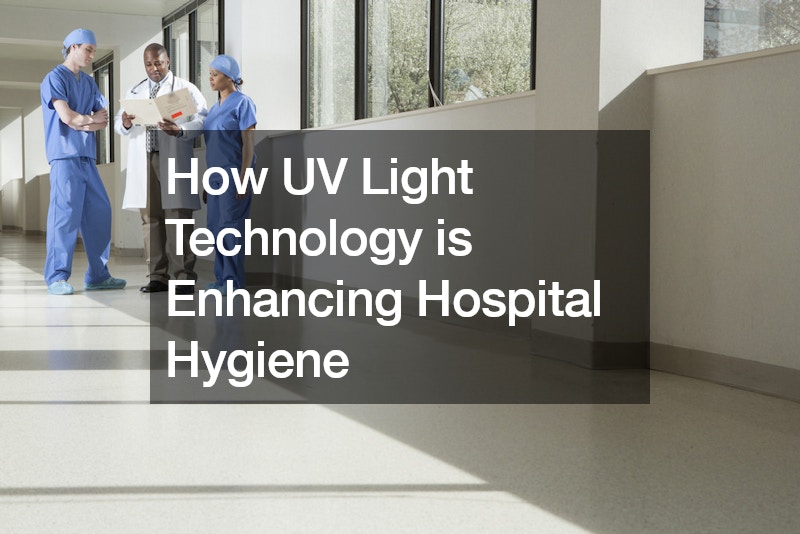
Hospitals and other healthcare facilities are essential for treating illnesses and saving lives. However, these places can also be hotspots for bacteria, viruses, and other pathogens. Traditional cleaning methods, while necessary, often fall short in eliminating all contaminants, especially with the rise of antibiotic-resistant superbugs. This is where UV light technology comes in, offering a powerful solution to enhance hospital hygiene.
The Role of UV Light in Disinfection
Ultraviolet (UV) light, particularly in the germicidal range, has proven to be an effective tool for killing bacteria, viruses, and other harmful microorganisms. UV light disinfection works by breaking down the DNA or RNA of these pathogens, rendering them incapable of reproducing and causing infections. This makes UV light a valuable addition to the sanitation processes in hospitals, urgent care facilities, labs, and other medical settings.
Combining UV Light with Traditional Cleaning Methods
In healthcare facilities, UV sanitation solutions are typically used alongside traditional cleaning methods to achieve a higher level of cleanliness. Traditional methods, such as manual wiping and chemical disinfectants, are essential for removing visible dirt and grime. However, they might not reach every nook and cranny where pathogens can hide. UV light technology complements these methods by targeting areas that are hard to reach, ensuring a more comprehensive disinfection process.
Applications of UV Light in Healthcare
There are several ways in which UV light technology is applied in healthcare settings:
- UV Sanitation Carts: These portable devices can be moved around the facility to disinfect different areas. They emit UV light to sterilize surfaces, reducing the presence of harmful pathogens significantly faster than traditional methods alone.
- UV Sanitation Wands: These handheld devices are used to quickly disinfect surfaces, such as respiratory machines, smartphones, and medical devices. They are particularly useful for areas that require frequent cleaning and for reaching small or complex surfaces.
- UV Light in HVAC Systems: UV-C lights can be installed within HVAC systems to disinfect the air as it circulates through the facility. This helps in reducing airborne pathogens, providing a cleaner and safer environment for patients and healthcare workers.
Addressing the Challenge of Superbugs
One of the significant challenges in modern healthcare is the emergence of antibiotic-resistant superbugs. These pathogens are difficult to eliminate using conventional methods, making infections harder to treat. UV light disinfection offers a promising solution in this fight. By effectively killing these resilient microorganisms, UV light helps in controlling the spread of infections and improving overall hospital hygiene.
Case Studies and Effectiveness
Many healthcare facilities across the country have adopted UV light technology and reported positive outcomes. For instance, hospitals using UV sanitation carts and wands have seen a reduction in infection rates and a higher level of cleanliness. The ability of UV light to disinfect both surfaces and air makes it a versatile tool in maintaining a sterile environment.
Ensuring Safety and Efficiency
While UV light is powerful, it is also crucial to use it safely. Direct exposure to UV-C light can be harmful to skin and eyes. Therefore, UV light devices are designed with safety features to protect users. For example, UV sanitation carts often come with motion sensors that turn off the device if someone enters the room during the disinfection process.
The Future of Hospital Hygiene
The integration of UV light technology in healthcare facilities marks a significant advancement in hospital hygiene. As technology continues to evolve, we can expect even more efficient and user-friendly UV disinfection solutions to emerge. This will further enhance the ability of hospitals to provide a safe and clean environment for both patients and healthcare workers.
In conclusion, UV light technology is playing a crucial role in enhancing hospital hygiene. By effectively killing bacteria, viruses, and other pathogens, it complements traditional cleaning methods and addresses the challenges posed by antibiotic-resistant superbugs. As more healthcare facilities adopt UV light disinfection, we can look forward to a future with improved health and safety standards in medical environments.
.

